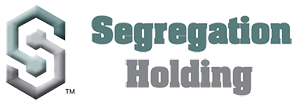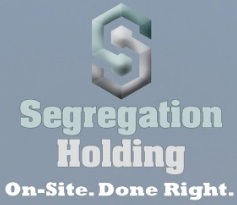Dry Cleaner Takes the IRS to the Cleaners! Again!
Last we met, our dry cleaner magnate, David Richey, was “cleaning up” a windfall income tax refund and spending it in Hawaii (as I recollect). He called to say he was staying a little longer. His problem though…”I want to stay longer but that costs money. <LIGHTBULB MOMENT> I own another dry cleaner location in Argyle, Texas. I want to conduct a cost segregation study on it,” he said. I said…we can do!
So, he engaged Segregation Holding LLC to perform a cost segregation study on his 2nd location in Argyle. Our engineer visited his dry cleaner facility and began photographing the assets. Again, this is to verify all assets are in place for IRS verification purposes. Laser measurements were taken of the site and confirmed.
As an aside…I realize some reading this may not fully understand cost segregation. Briefly, cost segregation is the process of identifying assets in a commercial property. In this instance, David’s dry cleaner facility. The purpose is to allocate or “segregate” the building components into categories. These categories fall within certain IRS guidelines for a building purpose.
For example, cabinetry is considered tangible personal property. You can unscrew it from the floor and move it. Tangible personal property qualifies for 5 or 7 year depreciation. If it meets the “Inherent Permanency Test” or the “WhiteCo Factors,” it qualifies. Okay, don’t let your eyes glaze over! These are simply IRS rulings or tax code that apply to tangible personal property.
Another category is land improvements. These constitute landscaping, parking, sidewalks, curbs, wheel stops, signage, dumpster enclosures, water collection basins, and  more. Land improvements qualify for 15 year depreciation. These various depreciation periods fall under Modified Accelerated Cost Recovery System, or MACRS. MACRS includes multiple depreciation periods. Cost segregation uses this IRS depreciation system to the benefit of dry cleaners. Cost segregation benefits ANY commercial property owner. There are two caveats. As a dry cleaner or other business owner, you must owe federal income taxes. And you must PAY them! Owing doesn’t mean paying…at least for some.
more. Land improvements qualify for 15 year depreciation. These various depreciation periods fall under Modified Accelerated Cost Recovery System, or MACRS. MACRS includes multiple depreciation periods. Cost segregation uses this IRS depreciation system to the benefit of dry cleaners. Cost segregation benefits ANY commercial property owner. There are two caveats. As a dry cleaner or other business owner, you must owe federal income taxes. And you must PAY them! Owing doesn’t mean paying…at least for some.
Okay, back to David’s dry cleaner story. The engineer returned to the office and began the segregation of assets. Drawings were reviewed, invoices reconciled against the depreciation schedule, closing documents & appraisal analyzed, and the final report generated. This process took about 3 weeks. <Brian worked OT to get it out, David wanted the money ASAP!> Most cost segregation studies will average 4 to 6 weeks from start to finish.
Wow again! Our first cost segregation study for David recovered over $35,000 in overpaid income taxes. This cost segregation study recovered over $47,000!!! Who among us couldn’t use more money in our pocket? David’s second dry cleaner facility paid off huge! Yours can too.
Do you own or lease a dry cleaner establishment? Perhaps you are a dentist, doctor, veterinarian, or restaurateur. Maybe you own a retail business of some kind like a storage facility or convenience store. It really doesn’t matter. What matters is this. It’s a fact you are overpaying your income taxes.
Would like find out how much of an income tax refund you are due? It’s free and no obligation. We make the process simple. Complete our client questionnaire. It may take 5 minutes if you are a “hunt and peck” typist…2 if not. We’ll send you a detail benchmark analysis of your facility. Take it to your CPA or tax advisor. Confirm your ability to take advantage of your tax refund. Why wait? Do it today. In about 60 days or so you could be in Hawaii with David!
Follow our tweets at Twitter. “Like” us on Facebook! Connect with the owner, Jeff Hobbs, on LinkedIn.
Want your questions answered now? Call us at 972-865-9050 or 443-Cost-Seg (267-8734).
We’re here to help get your hard earned money back in your pocket!





